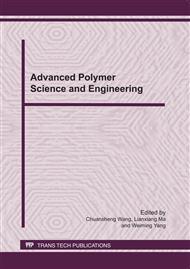[1]
Smith, S.T. Flexures: elements of elastic mechanisms. Gordon and Breach Science Publisher, (2000).
Google Scholar
[2]
H. Richter, E.A. Misawa, D.A. Lucca etc, Modeling nonlinear behavior in piezoelectric actuator, Precision Engineering, Vol 25, pp.128-137, (2001).
DOI: 10.1016/s0141-6359(00)00067-2
Google Scholar
[3]
Goldfarb, M. and N. Celanovic. Modeling piezoelectric stack actuators for control of micromanipulation. IEEE Control Systems Magazine, 1997, 17(3): pp.69-79.
DOI: 10.1109/37.588158
Google Scholar
[4]
E. SCIRE, F. and E.C. TEAGUE. Piezodriven 50-μm range stage with subnanometer resolution. Review of Scientific Instruments, 1978. 49(12): pp.1735-1740.
DOI: 10.1063/1.1135327
Google Scholar
[5]
Gao, P., S. Swei, and Z. Yuan. A new piezodriven precision micropositioning stage utilizing flexure hinges. Nanotechnology, 1999. 10: pp.394-398.
DOI: 10.1088/0957-4484/10/4/306
Google Scholar
[6]
Jih-Lian Haa, Ying-Shieh Kung. Optimal design of a micro-positioning Scott-Russell mechanism by Taguchi method. Sensors and Actuators A 125 (2006) 565–572.
DOI: 10.1016/j.sna.2005.06.025
Google Scholar
[7]
Fareg M. Aldebrez, Mohammad S. Alam. Input-shaping with GA-tuned PID for target tracking and vibration reduction. Proceedings of the 13th Mediterranean Conference on Control and Automation (2005)485-490.
DOI: 10.1109/.2005.1467063
Google Scholar
[8]
A. -Z. Yan, G. -Q. Wang. Reduction of residual vibration in a rotating flexible beam. Acta Mechanica 171, 137–149 (2004).
DOI: 10.1007/s00707-004-0133-y
Google Scholar
[9]
Nam, Y. Vibration suppression of a piezoelectric beam using a self-sensing algorithm. 2005. Changchun, China: International Society for Optical Engineering, Bellingham WA, WA 98227-0010, United States.
Google Scholar
[10]
Chen, K. -S., Residual vibration suppression of cantilever beam using command shaping techniques. Zhongguo Hangkong Taikong Xuehui Huikan/Transactions of the Aeronautical and Astronautical Society of the Republic of China, 2004. 36(3): pp.249-257.
Google Scholar
[11]
Jie, D. -G., et al. Fuzzy-reasoning based self-tuning PID control for piezoelectric micro-displacement system. Harbin Gongye Daxue Xuebao/Journal of Harbin Institute of Technology, 2005. 37(2): pp.145-147.
Google Scholar
[12]
Wai, R.J., C.M. Lin, and Y.F. Peng. Robust CMAC neural network control for LLCC resonant driving linear piezoelectric ceramic motor. IEE Proceedings: Control Theory and Applications, 2003. 150(3): pp.221-232.
DOI: 10.1049/ip-cta:20030243
Google Scholar
[13]
Ru, C. -H., L.I.N. Sun, and M. -X. Kong. Adaptive inverse control for piezoelectric actuator based on hysteresis model. 2005. Guangzhou, China: Institute of Electrical and Electronics Engineers Computer Society, Piscataway, NJ 08855-1331, United States.
Google Scholar


